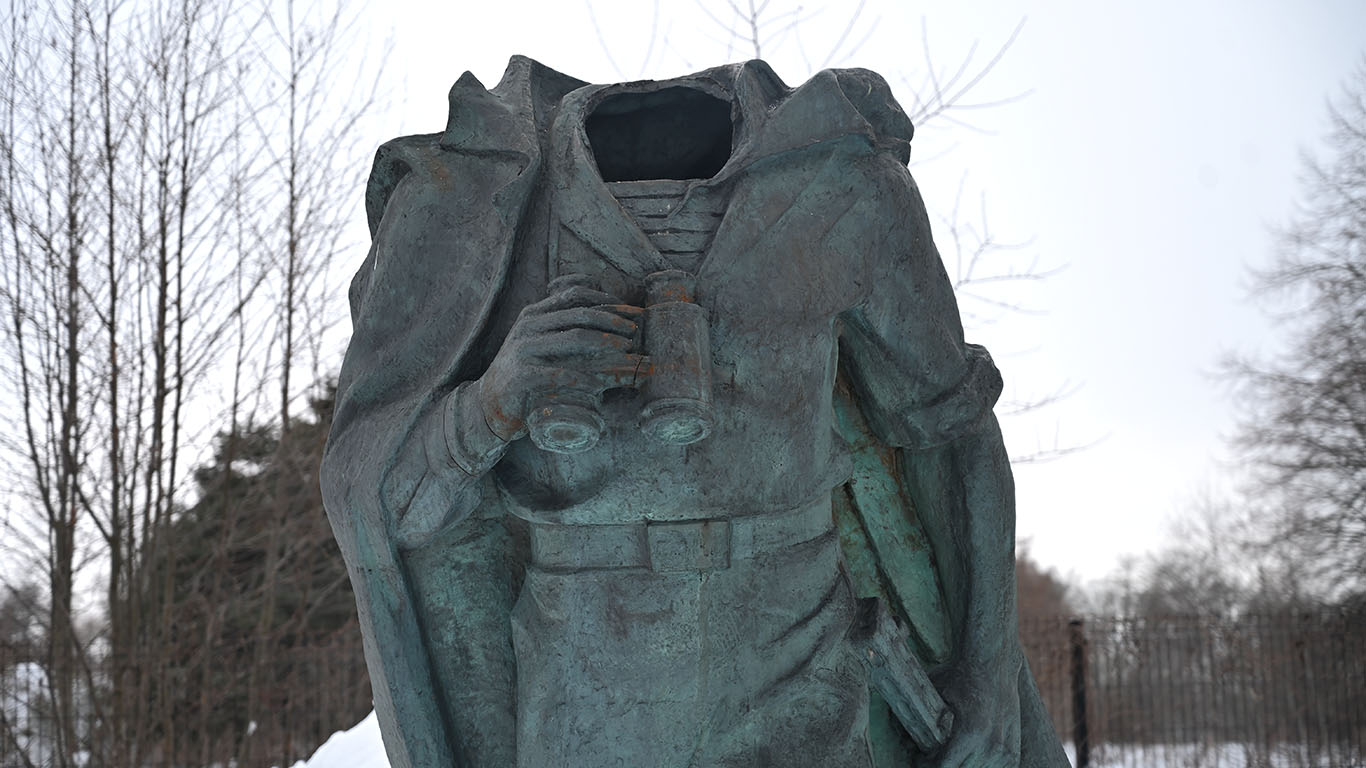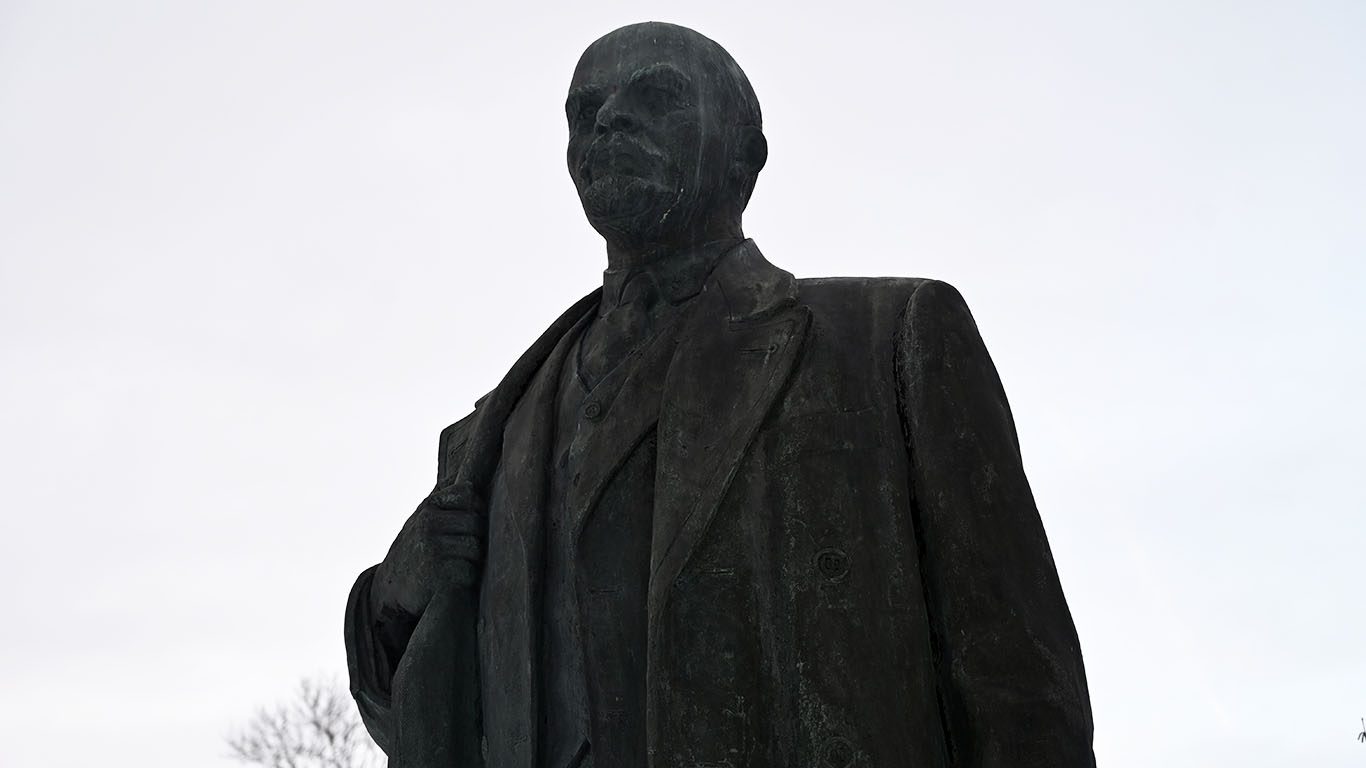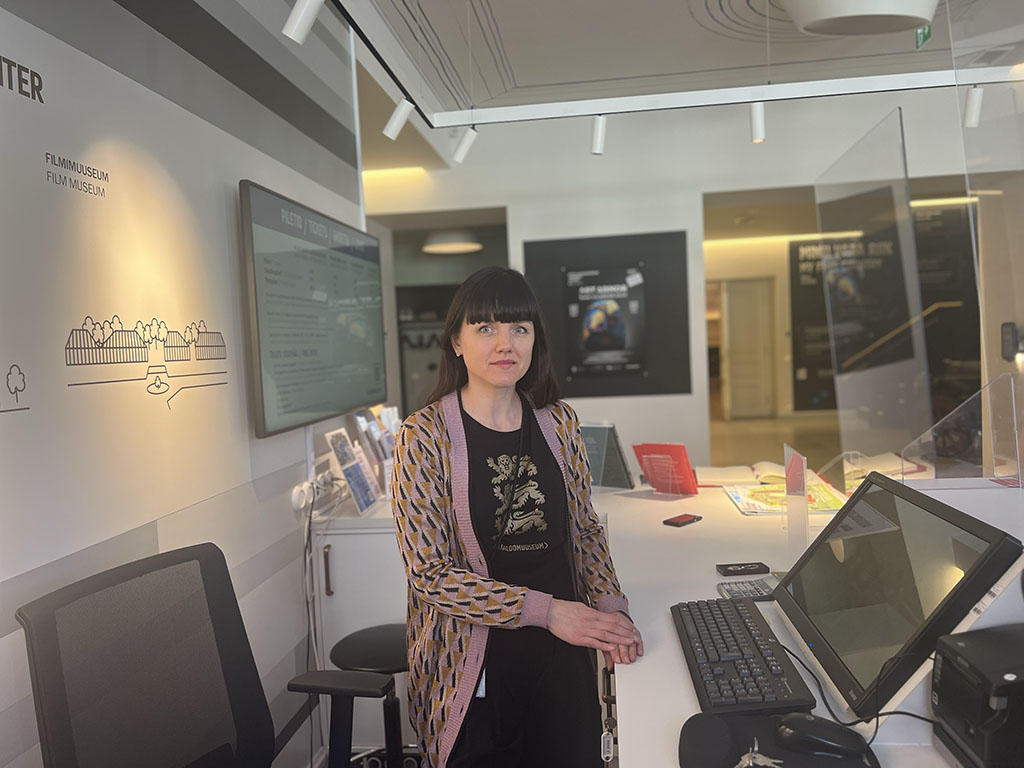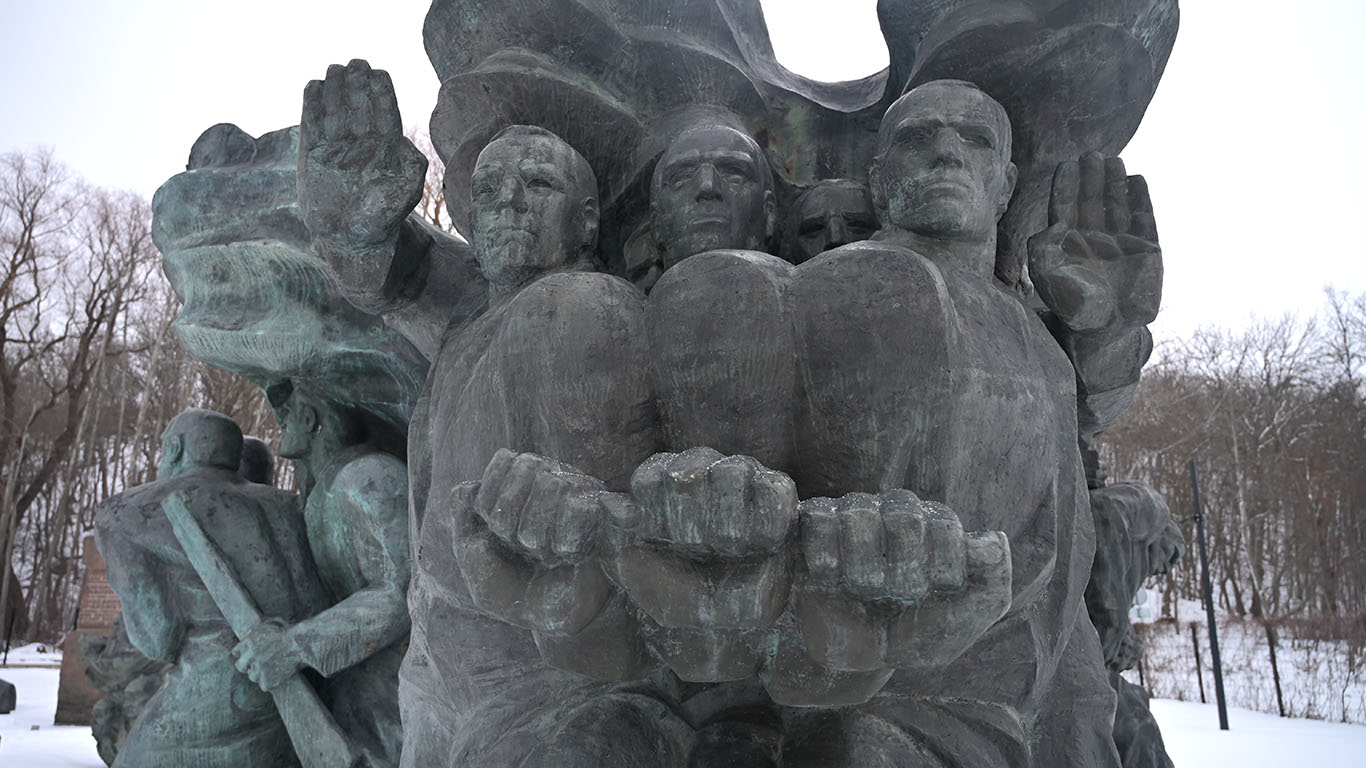Heads and Tails
By Anjelica Rubin
Just ten minutes from Old Town lies the cast iron head of Vladimir Lenin.
It’s one of many remnants of Soviet era statues displayed outdoors year-round at the Museum of Estonian History at Maarjamäe Castle.
Bordering part of the museum’s new park, the exhibition—the largest in the country — consists of 21 statues created mostly by Estonian sculptors between 1945 and 1990, when the country was occupied by the Soviet Union.

Some artifacts, such as the Joseph Stalin statue, have withstood years of harsh Estonian weather and are in almost perfect condition, while others are only remnants of their previous selves — just heads and bodies strewn across what’s known as the “Soviet era graveyard.”
But the statues weren’t always memorialized in such a manner. Krista Sarv, the lead researcher at the museum, said that prior to 2018, the statues were amassed “in a scattered pile” behind the palace.
“[Most of the statues have come] from town public places all over the country,” Sarv said. “From Tallinn to Tartu to Pärnu, the statues were usually in each town’s main squares and public parks.”
Sarv said the monuments came to the museum during the 1990s. Some Estonians are skeptical of keeping relics of a time in their history they may prefer to forget. But Sarv noted the historical significance of the statuary.

“The reason is very simple. First, they are historical objects. Yes, they speak about ideology that we don’t want to go back to, but also it’s part of our history,” Sarv said. “Second, almost all of [the statues] were built by some of our country’s most famous artists.”
Among the artists represented here are Allan Murdmaa who was the official state artist of Tallinn in the early 1960s, and August Volberg, an architect and educator from the 1940s to the1980s.
“The main concept of open-air display is to show how Soviet ideology gives birth and kills its children,” Sarv said. “The museum’s job is to talk about it and give these statues the honest context.”
Museum guide Maarja Laiapea began working at the museum last September. She works throughout the institution, leading tours and creating lessons for schoolchildren among other responsibilities.

“I love everything about my job…It’s naturally beautiful, freshly renovated and allows me the independence needed as a guide.”
She is not too familiar with the statues “out back,” but she said that’s the appeal of her job — there’s always more to learn.
“It’s never boring, always interesting,” Laiapea said.

In a time of tense relations between Estonia and its former occupier, Laiapea said the Soviet era statues deserve protection as a relic of the past.
“If we don’t know our history, we won’t know who we are,” Laiapea said. “First you must know your own history, your family history, your town history, but then your country’s history. How else do we learn from the past if we can’t reflect on it?”
Visitors enter the statue circle from a small path at the front of the castle where they are met by a quote from former Estonian president Lennart Meri, that reads “Shadows of the past will help us remember that freedom may be fleeting.”
Sarv said Meri’s words hold true especially now as the war continues in Ukraine.
“We must remember and talk about the crimes of Soviet ideology so it can never come back,”, Sarv said. “Today, in the context of the Ukrainian war, this is the naked truth. The fear that our eastern neighbor has not forgotten his conquering intensions and carrying them out madly, has turned out to be true.”
I thoroughly enjoyed my short time yesterday visiting the ‘Graveyard of Soviet Statues’ garden. The words and sentiments by Sarv strongly resonate with me. Thank you.